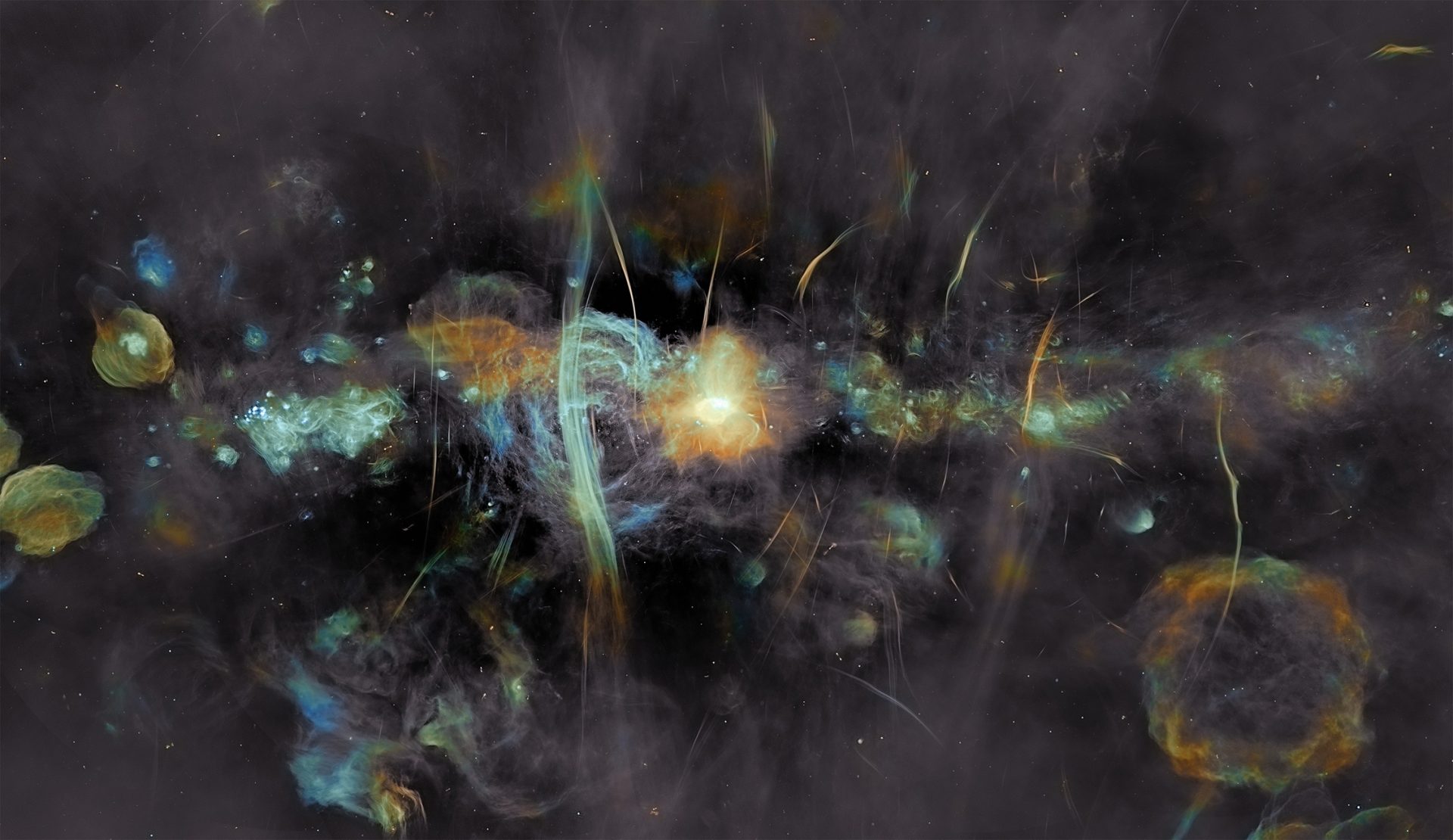For decades, astronomers have used powerful instruments to capture images of the cosmos in various wavelengths. This includes optical images, where visible light is observed, and images that capture non-visible radiation, ranging from the radio and infrared to the X-ray and Gamma-ray wavelengths. However, these two-dimensional images do not allow scientists to infer what the objects look like in three dimensions. Transforming these images into a 3D space could lead to a better understanding of the physics that drives our Universe.
In a recent study, an international team of researchers led by the Minnesota Institute for Astrophysics (MIfA) at the University of Minnesota announced the development of a new technique for radio astronomy. This first-ever technique reconstructs radio images into three-dimensional “Pseudo3D cubes” that allow astronomers to get a better idea of what cosmic structures look like. This technique could lead to an improved understanding of how galaxies, massive black holes, jet structures, and the Universe work.
The study was led by Lawrence Rudnick, a Professor Emeritus at the Minnesota Institute for Astrophysics. he was joined by colleagues from the Research School of Astronomy and Astrophysics at the Australian National University, National Radio Astronomy Observatory (NRAO), the Institute for Radio Astronomy and Astrophysics, National Autonomous University of Mexico, the Jodrell Bank Centre for Astrophysics, University of Manchester, and the Kavli Institute for Particle Astrophysics and Cosmology.
To develop their 3D modeling tool, the team looked at polarized radio light, which vibrates in a specific direction. The research team then factored in the effect called “Faraday rotation,” where the the polarization of light rotates along the direction of propagation in proportion to the projection of a magnetic field. Named after Michael Faraday, this effect was the first experimental evidence that light and electromagnetism are related. In the case of radio waves, the rotation depends on how much material they have passed through.
With this technique, the team examined various radio image samples obtained by the Australian Square Kilometer Array Pathfinder Telescope (ASKAP) and MeerKAT radio telescopes. They found they could estimate how far each part of the radio light had traveled, enabling them to create a 3D model of phenomena happening millions of light-years away. This technique also allowed the team to demonstrate, for the first time, how the line-of-sight orientation of relativistic jets can be determined.
They also examined the supermassive black hole (SMBH) at the heart of the M87 galaxy. Using their technique, the team was able to show how material ejected interacts with cosmic winds and space weather and also analyzed the structures of the jet’s magnetic fields in space. As Rudnick said in a recent University of Minnesota press release:
“We found that the shapes of the objects were very different from the impression that we got by just looking at them in a 2D space. Our technique has dramatically altered our understanding of these exotic objects. We may need to reconsider previous models on the physics of how these things work. There is no question in my mind that we will end up with lots of surprises in the future that some objects will not look like we thought in 2D.”
The team recommends using this technique to reevaluate all previous analyses of polarized light sources. They also hope this technique will be applied to images taken by next-generation telescopes around the world. This includes the new Square Kilometer Array (SKA-Phase2) project, which will extend the facility to about 2000 dishes, making it 50 times more sensitive and 10,000 times faster than any other radio telescope in the world.
Further Reading: UofM-CSE, MNRAS


